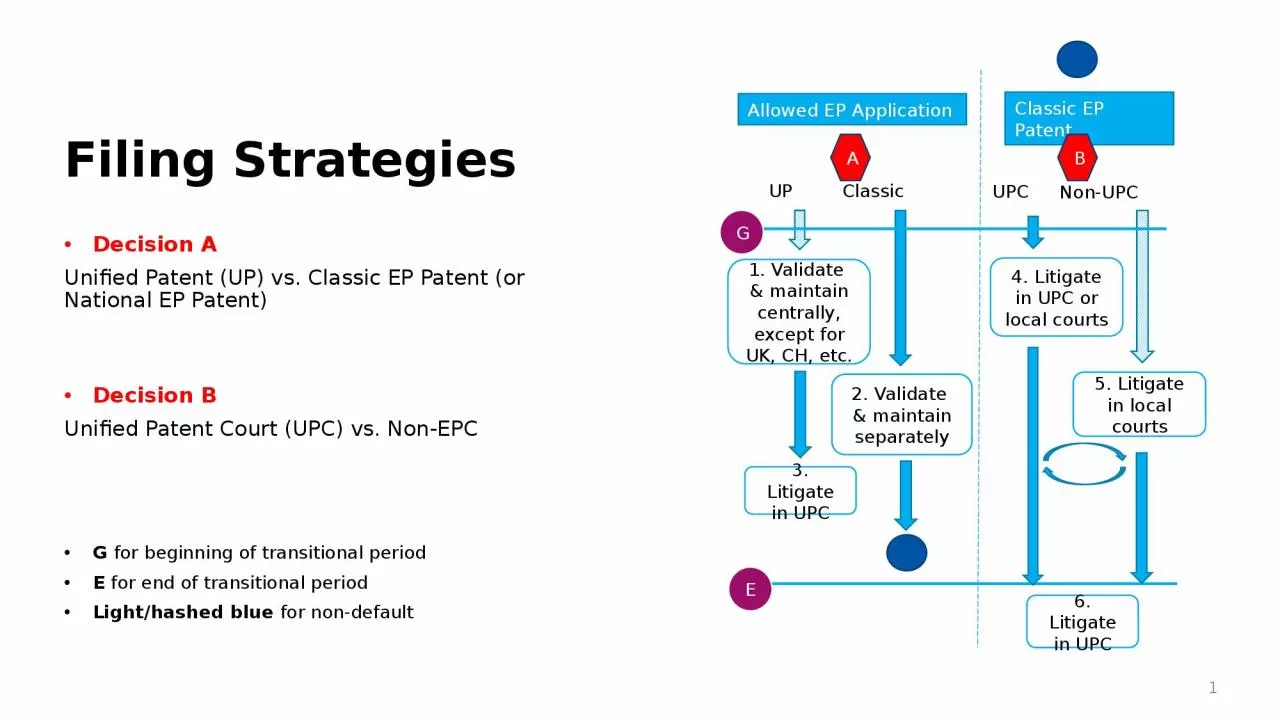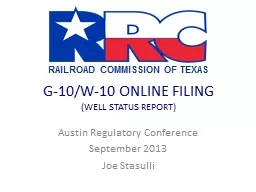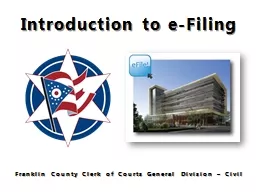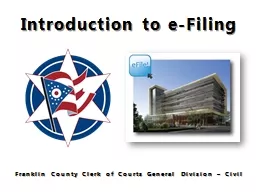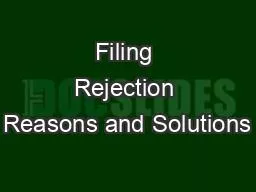PPT-1 Filing Strategies Decision A
Author : taylor | Published Date : 2023-06-24
Unified Patent UP vs Classic EP Patent or National EP Patent Decision B Unified Patent Court UPC vs NonEPC G for beginning of transitional period E for end of transitional
Presentation Embed Code
Download Presentation
Download Presentation The PPT/PDF document "1 Filing Strategies Decision A" is the property of its rightful owner. Permission is granted to download and print the materials on this website for personal, non-commercial use only, and to display it on your personal computer provided you do not modify the materials and that you retain all copyright notices contained in the materials. By downloading content from our website, you accept the terms of this agreement.
1 Filing Strategies Decision A: Transcript
Download Rules Of Document
"1 Filing Strategies Decision A"The content belongs to its owner. You may download and print it for personal use, without modification, and keep all copyright notices. By downloading, you agree to these terms.
Related Documents

